SWAN'S NEW SONG
Sailing in symphony on board the first ClubSwan 80
Breaking new ground in performance sailing, the new Nautor Swan My Song is a futuristic one-design racer on an unprecedented scale. Elaine Bunting experiences her under sail
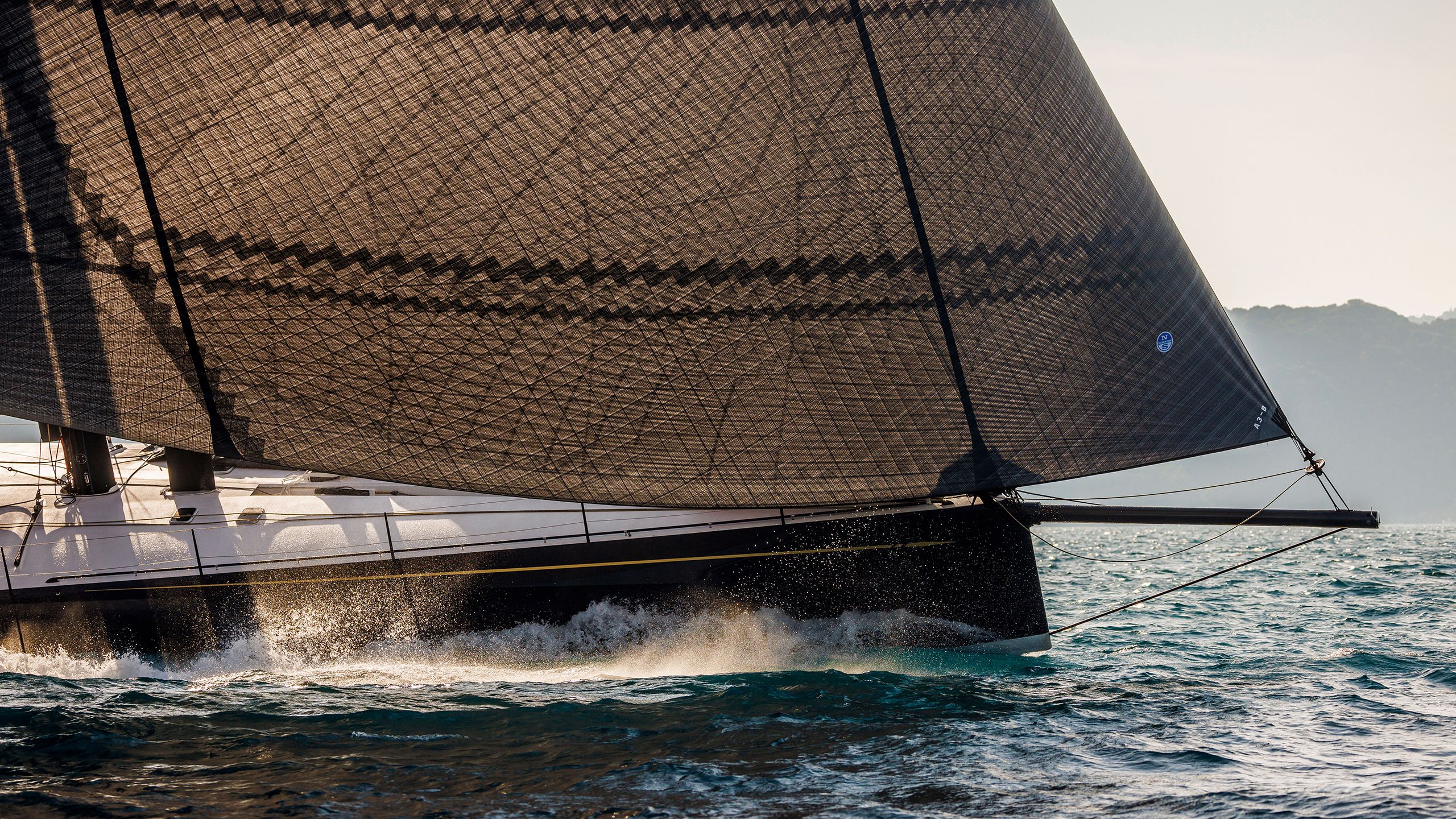
Spray thrown by My Song’s angular bow fizzes to leeward. The towering, black blade sails and reverse sheer make her seem as if she’s about to pounce. Even on a flat sea, the yacht rips out a wake with breeze of her own powerful making.
My Song, the new ClubSwan 80, is a futuristic racer-cruiser designed to provide an adrenaline ride for an owner-driver in the Maxi yacht race circuit yet be suited to short cruising. Built by Persico Marine, the ClubSwan 80 is billed as the first in a new one-design class where owners can vie with each other on level pegging, as they do in smaller ClubSwan 36 and ClubSwan 50 designs.
It is a punchy move by the Finnish-Italian company. It is joining battle with some of the world’s best custom designs and intricately rehearsed pro crews. The ClubSwan 80 may take time to fully prove itself. In the meantime, its looks can kill. That big, square top mainsail, hard chines and sloping shape not only defy convention, they make much of the competition look suddenly dated.
This angle shows the two distinct chines running aft from the bow. The gold cove line terminating in the signature Nautor Swan arrow was purposely included by Nauta to emphasise the yacht’s contemporary sheerline
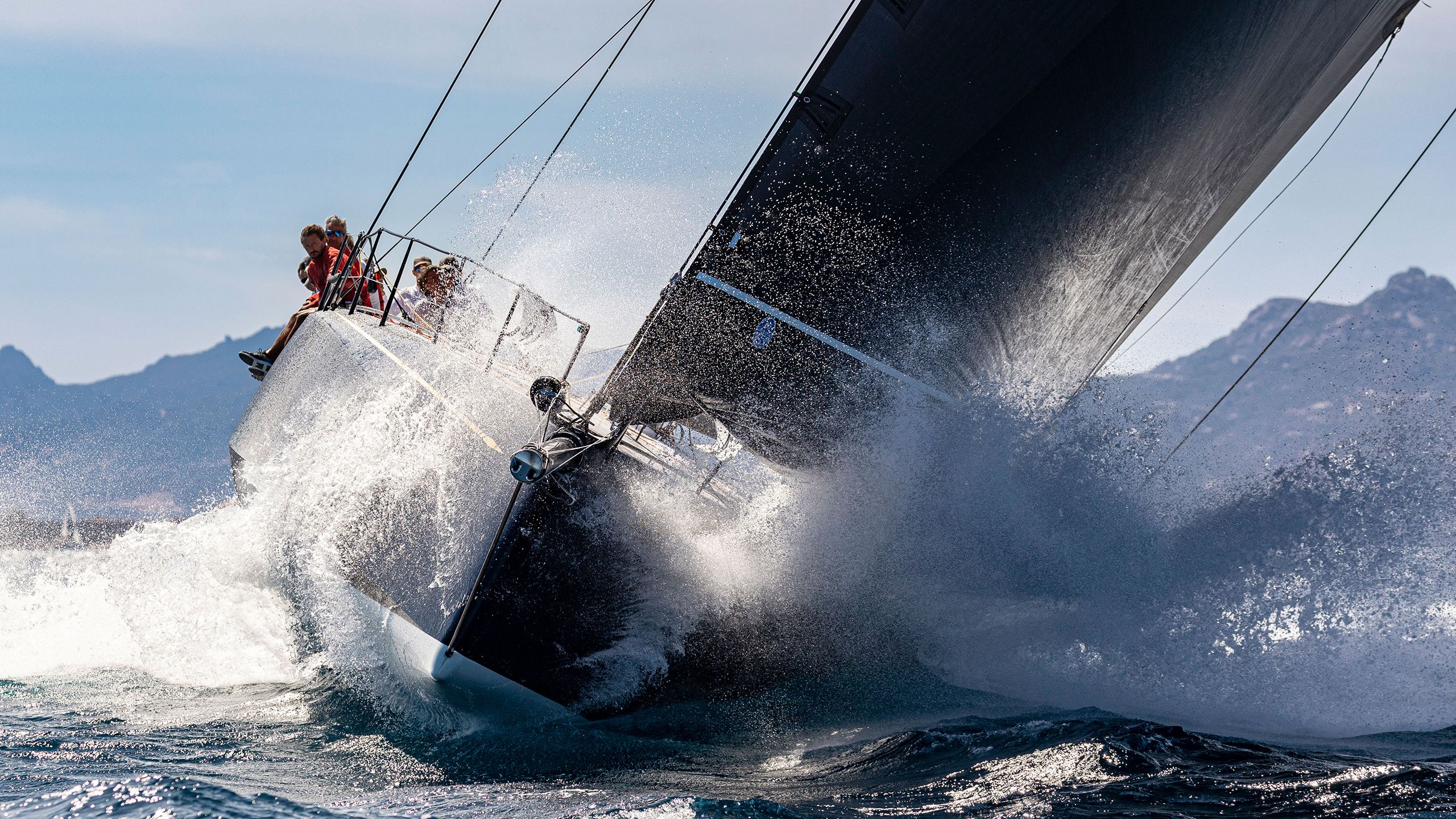
My Song is the latest in a succession of yachts of that name, owned by Italian businessman Pier Luigi Loro Piana in his 40-year sailing career, and was born from a very personal catastrophe. His previous My Song, a Baltic 130, was being transported on a ship in May 2019 when she fell over the side and was holed from the impact. The yacht was a total loss.
The boat was only three years old at the time, one of the finest high-performance sailing superyachts to be built, and her destruction was devastating. “It was as if my home had burnt down,” Loro Piana confessed. When your dream yacht is in ruins, where do you set your heart next? “I really loved that boat,” he says, “but afterwards, I wanted a different choice.”
At the time, Nautor was building the ClubSwan 125 Skorpios, the largest of its high-performance ClubSwan one-design racers by Franco-Argentinean naval architect Juan Kouyoumdjian (a surname so tricky to pronounce that everyone just calls him Juan K). The company had plans to flesh out a racing line they began with the ClubSwan 50 and ClubSwan 36 with a model that slotted into the elite Maxi class.
The ClubSwan 80 would be intended for owner-driver racing and the regattas that cater to them, and be the basis of a cost-contained, level playing field for other owners to join. The team assembled for the project included Pure Design & Engineering for the engineering and Nauta Design for the interior, while the construction of the carbon composite hull, its interior and exterior, went to race boat specialists Persico Marine.
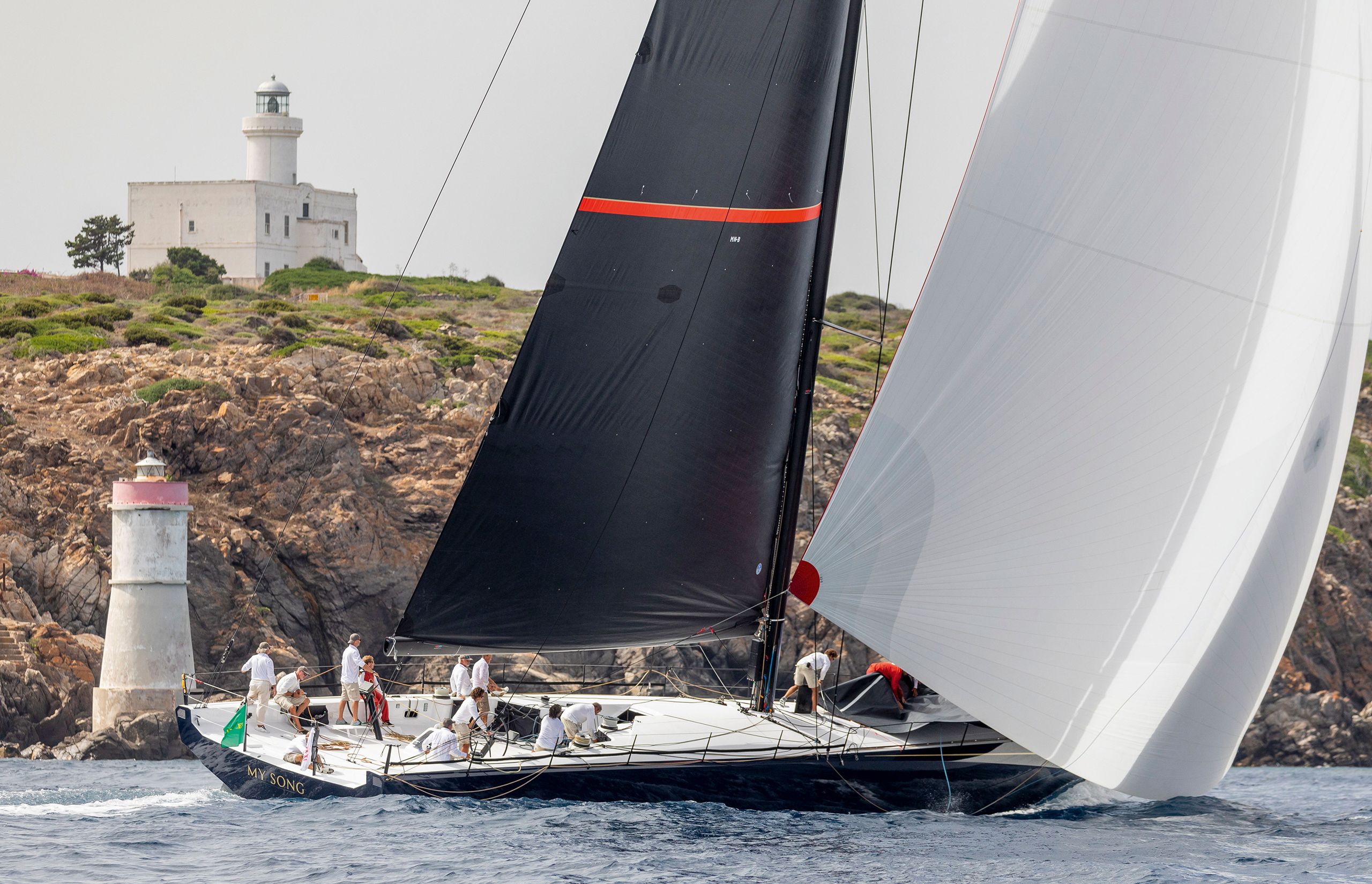
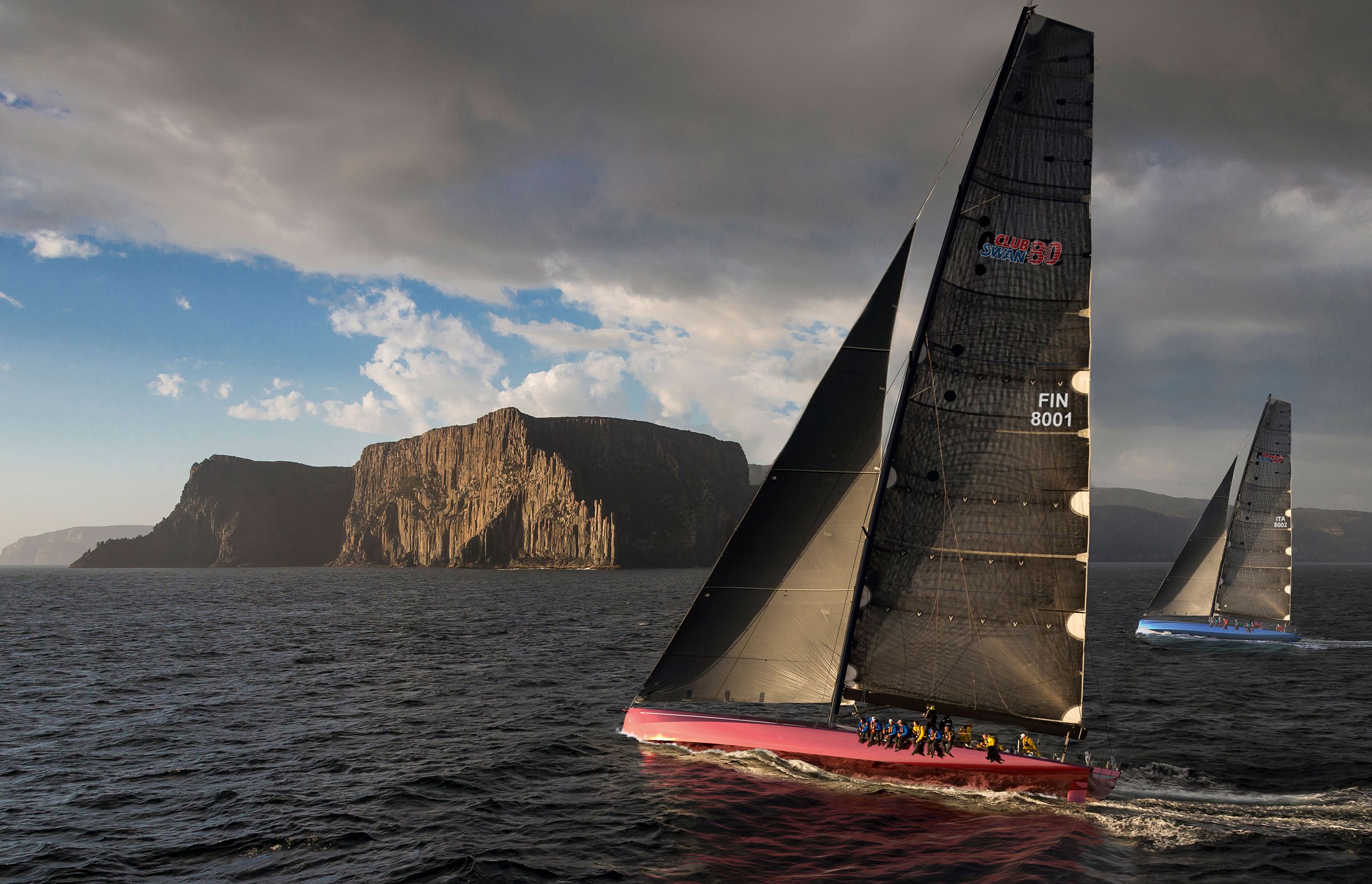
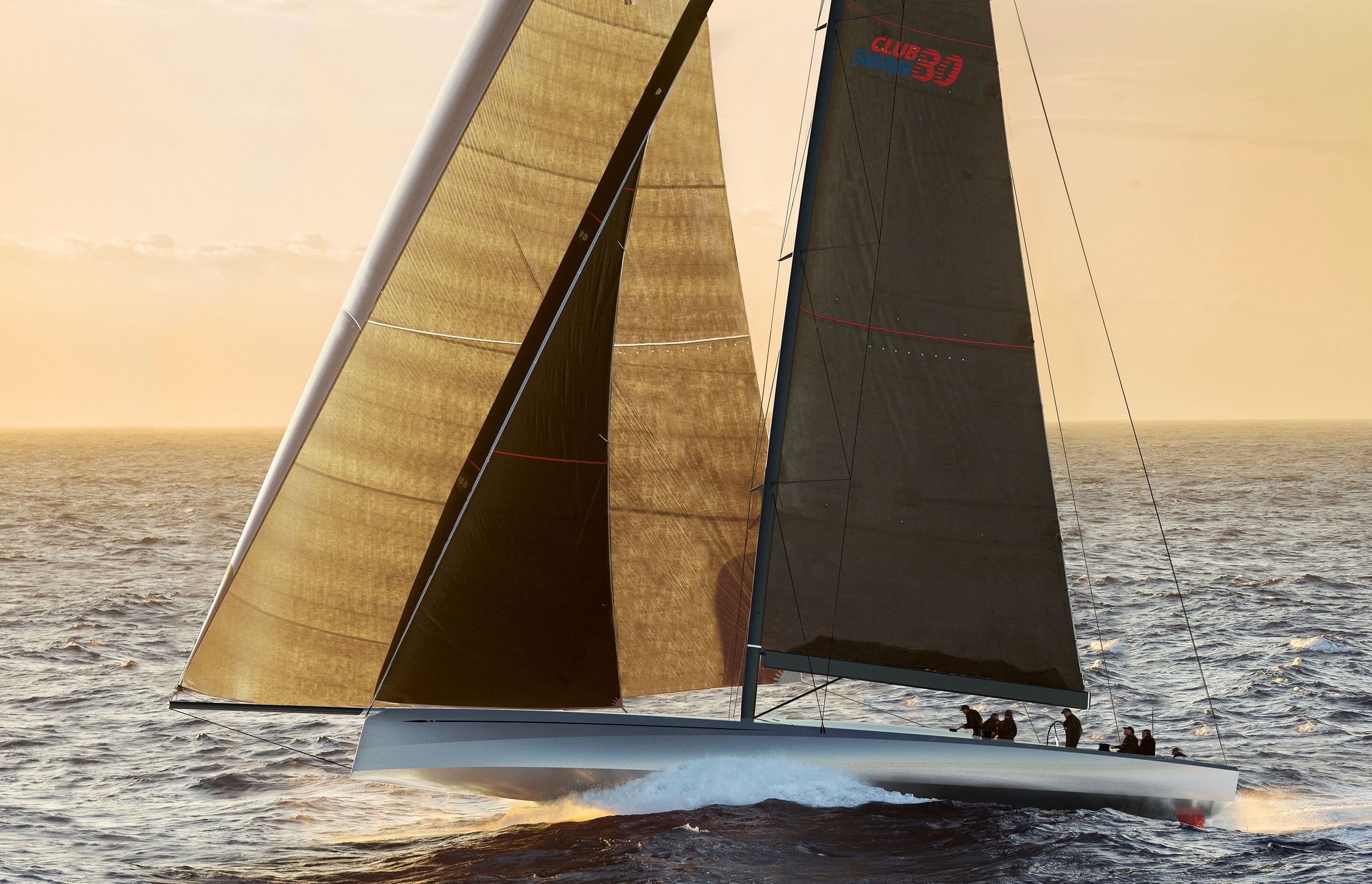
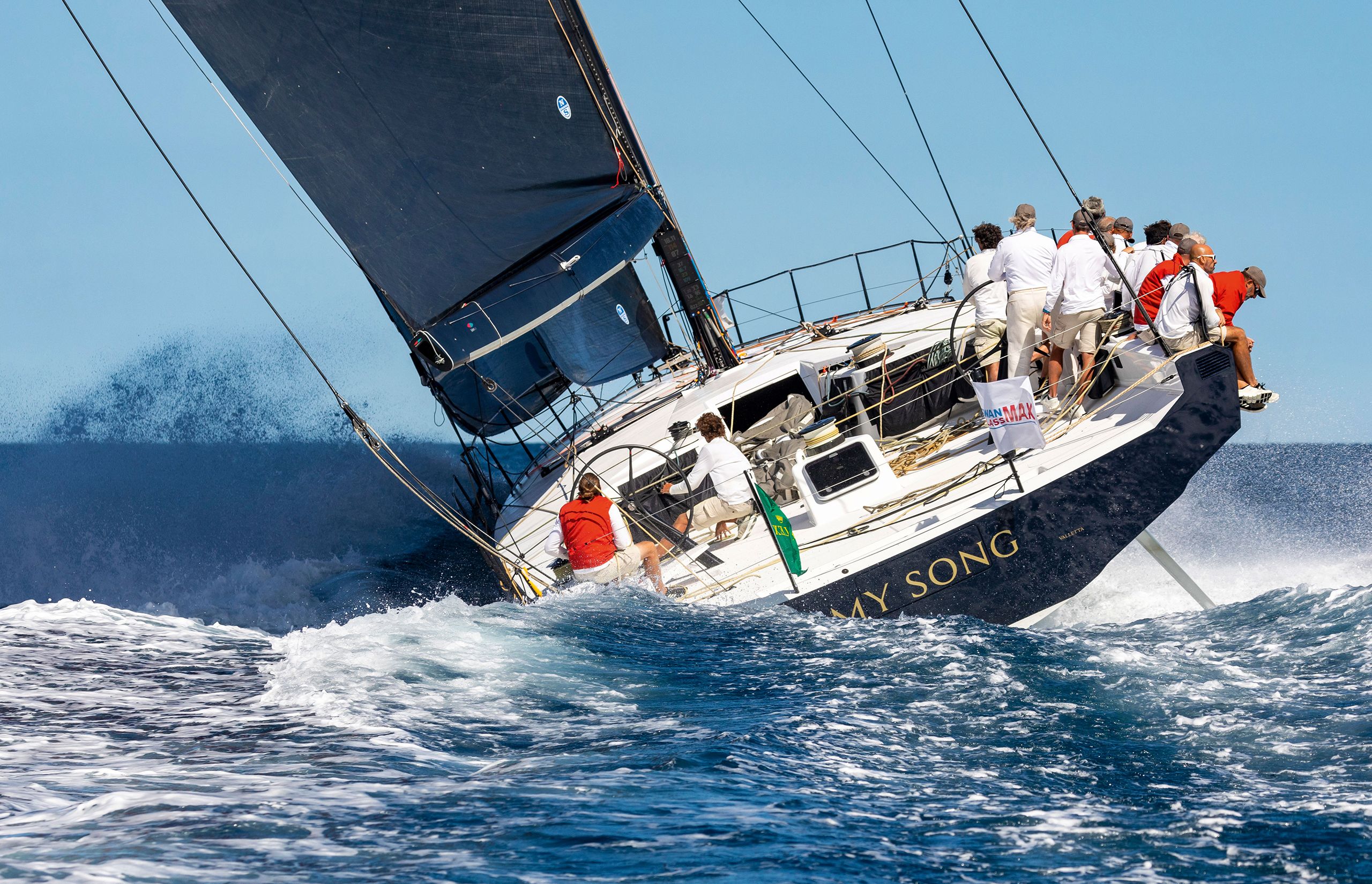

CLUBSWAN RACING/STUDIO BORLENGHI
CLUBSWAN RACING/STUDIO BORLENGHI

NAUTOR SWAN/CARLO BORLENGHI
NAUTOR SWAN/CARLO BORLENGHI


CLUBSWAN RACING/STUDIO BORLENGHI
CLUBSWAN RACING/STUDIO BORLENGHI
Nautor developed the ClubSwan 80 as the largest one-design racing yacht in the world. Top left: racing under a big asymmetric spinnaker during the yacht’s crucial maiden regatta, the Maxi Yacht Rolex Cup, in Porto Cervo in September. Bottom: the canting keel and furling headsails mean that the yacht can be raced with 16 to 18 crew
As its first owner, Loro Piana and his sailing team had the chance to shape the characteristics of this new design for the inshore races that were their target. These are Mediterranean regattas such as the Rolex Giraglia, the Maxi Yacht Rolex Cup, PalmaVela, the Rolex Swan Cup and Les Voiles de Saint-Tropez, as well as offshore regattas such as the Rolex Middle Sea Race, RORC Caribbean 600, and Palermo-Montecarlo.
While the ClubSwan 80 is an all-rounder, My Song’s team wanted to optimise the design for light winds – “upwind in seven to eight knots of true wind”, says Loro Piana’s long-time team manager Giorgio Benussi.
Some key aspects were changed. The original Juan K design featured a 4.75-metre canting keel and a rotating C-foil for sailing in “skimming” mode (similar to the other yachts in the ClubSwan range). That was changed to a canting keel and a single rotating canard.
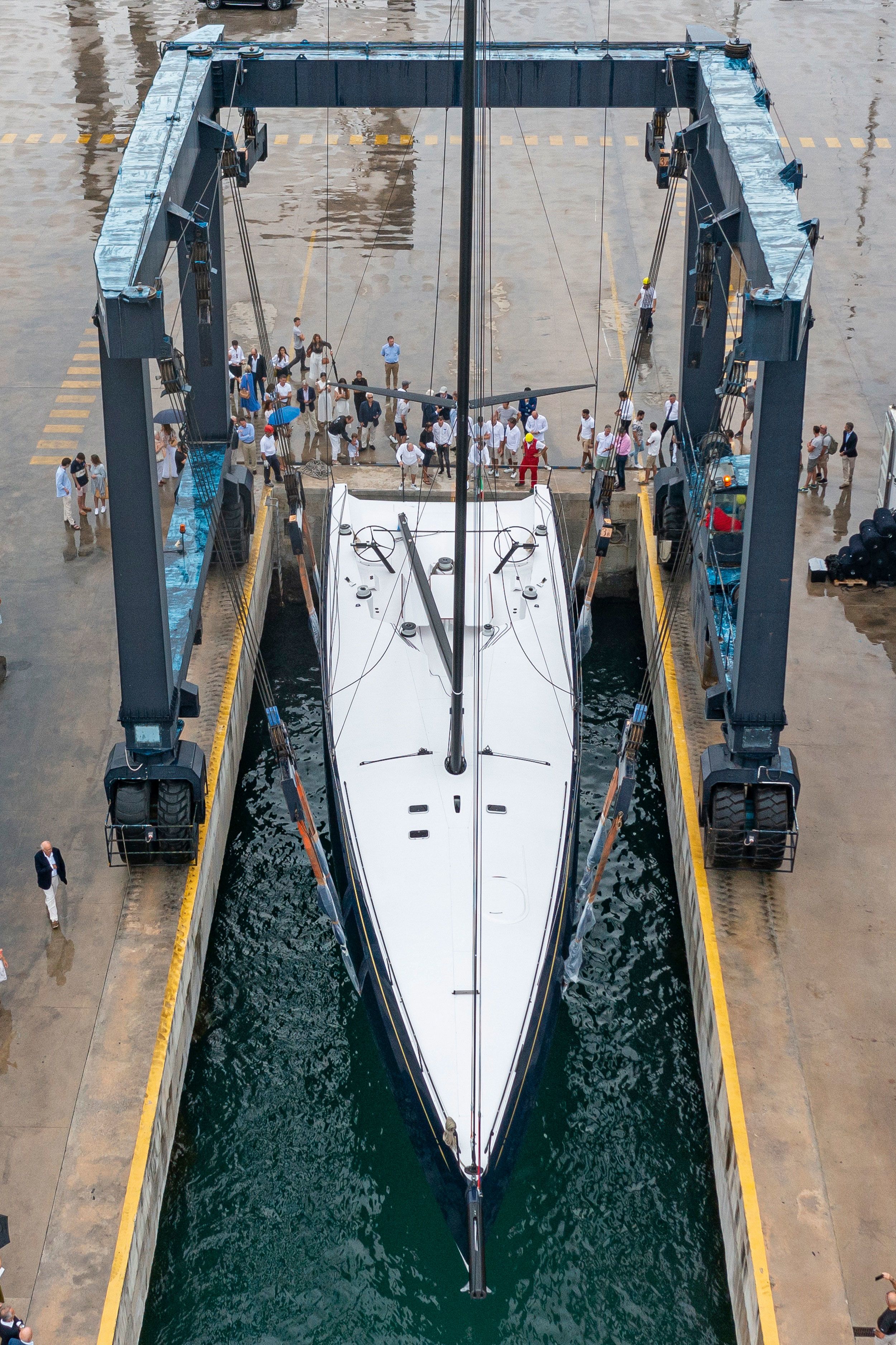
NAUTOR SWAN / STUDIO BORLENGHI: The hull being laid up in pre-preg carbon at Persico Marine in Italy. Some elements were built with a robotic automatic tape-laying machine similar to those used in the aerospace industry.
NAUTOR SWAN / STUDIO BORLENGHI: The hull being laid up in pre-preg carbon at Persico Marine in Italy. Some elements were built with a robotic automatic tape-laying machine similar to those used in the aerospace industry.
The keel ends in a 6,500-kilogram bulb that can be canted up to 43 degrees. The four-metre-long canard, or daggerboard, minimises leeway when the keel is canted, and can be angled hydraulically or fully retracted downwind to reduce drag. It can be rotated plus or minus eight degrees to mode between pointing higher and sailing slower, or going low and faster, depending on fleet tactics.
“The leitmotif of this boat is reinventing what it is to go racing and fast cruising,” says Juan K. “An 80ft [24-metre] yacht that is very light displacement – just over 19 tonnes – achieved with a canting keel [that] allows the same righting moment with 25 per cent less displacement.”
The huge sail area, 447 square-metres upwind, and displacement of just over 19 tonnes make this a fast and very responsive boat. The boat is fully powered up, keel canted, in just nine to ten knots of true wind. It is easily capable of reaching speeds of 12 to 13 knots upwind. Downwind Velocity Made Good (VMG) target speeds are two knots quicker than the true wind.
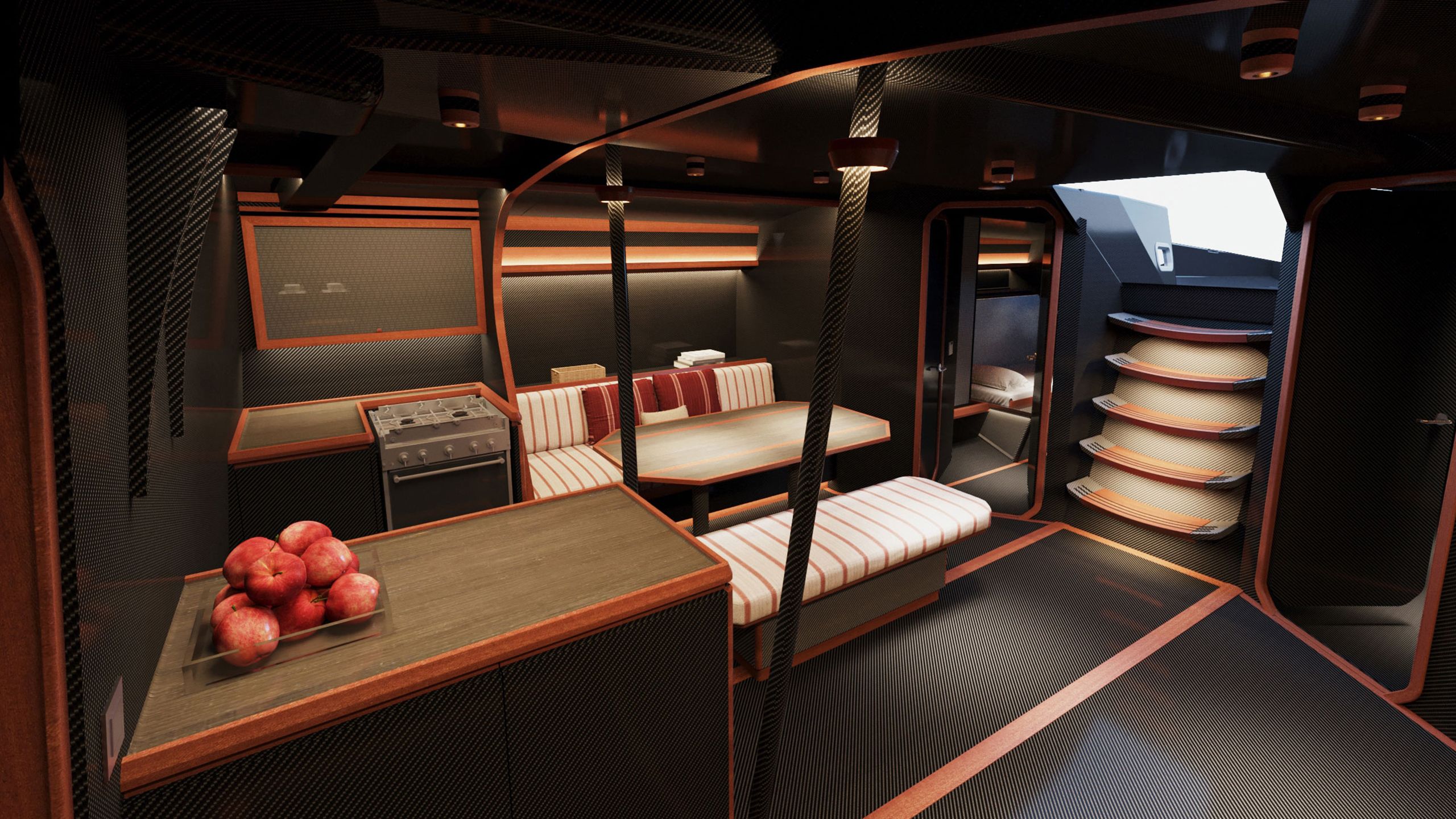
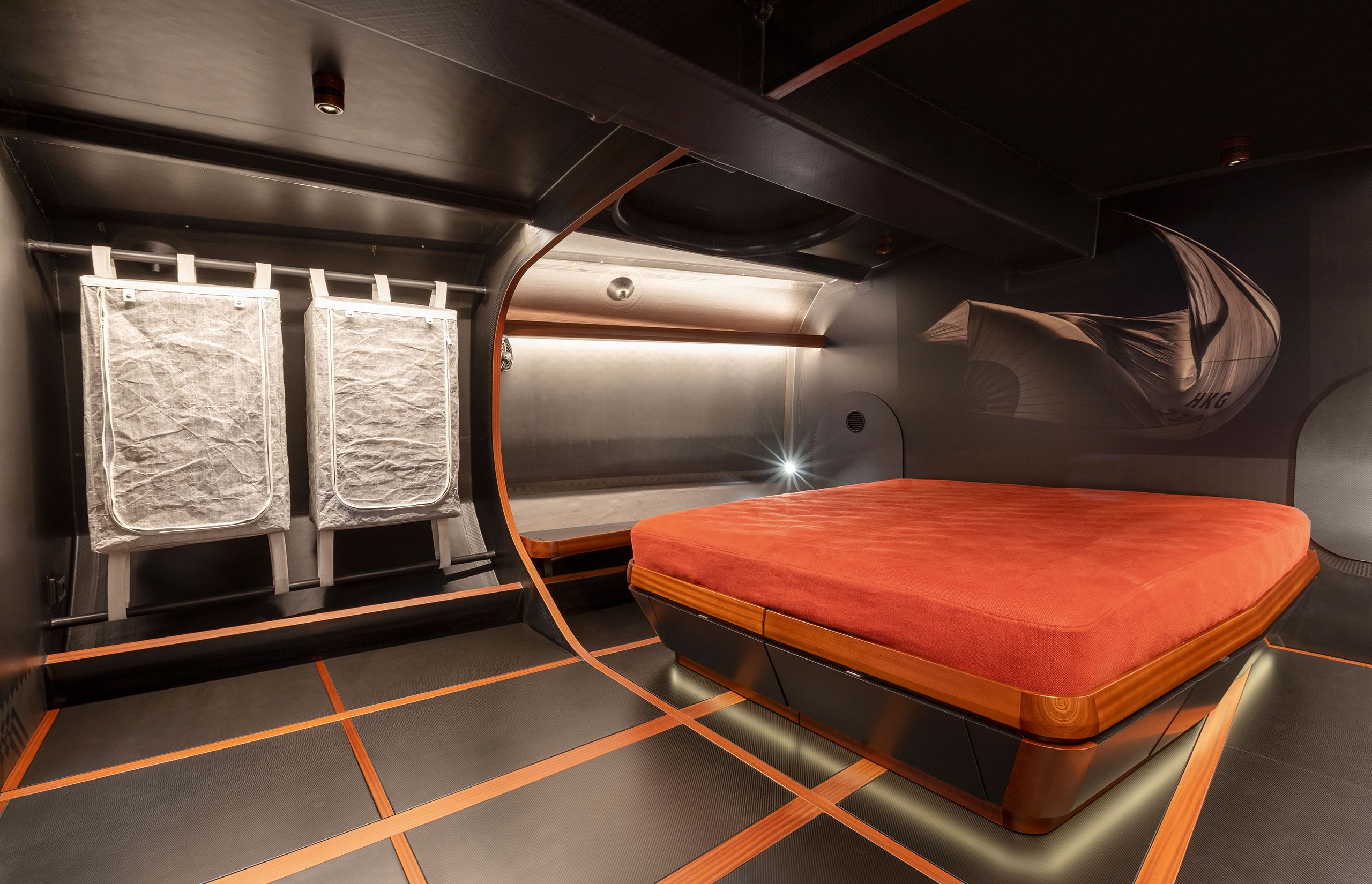
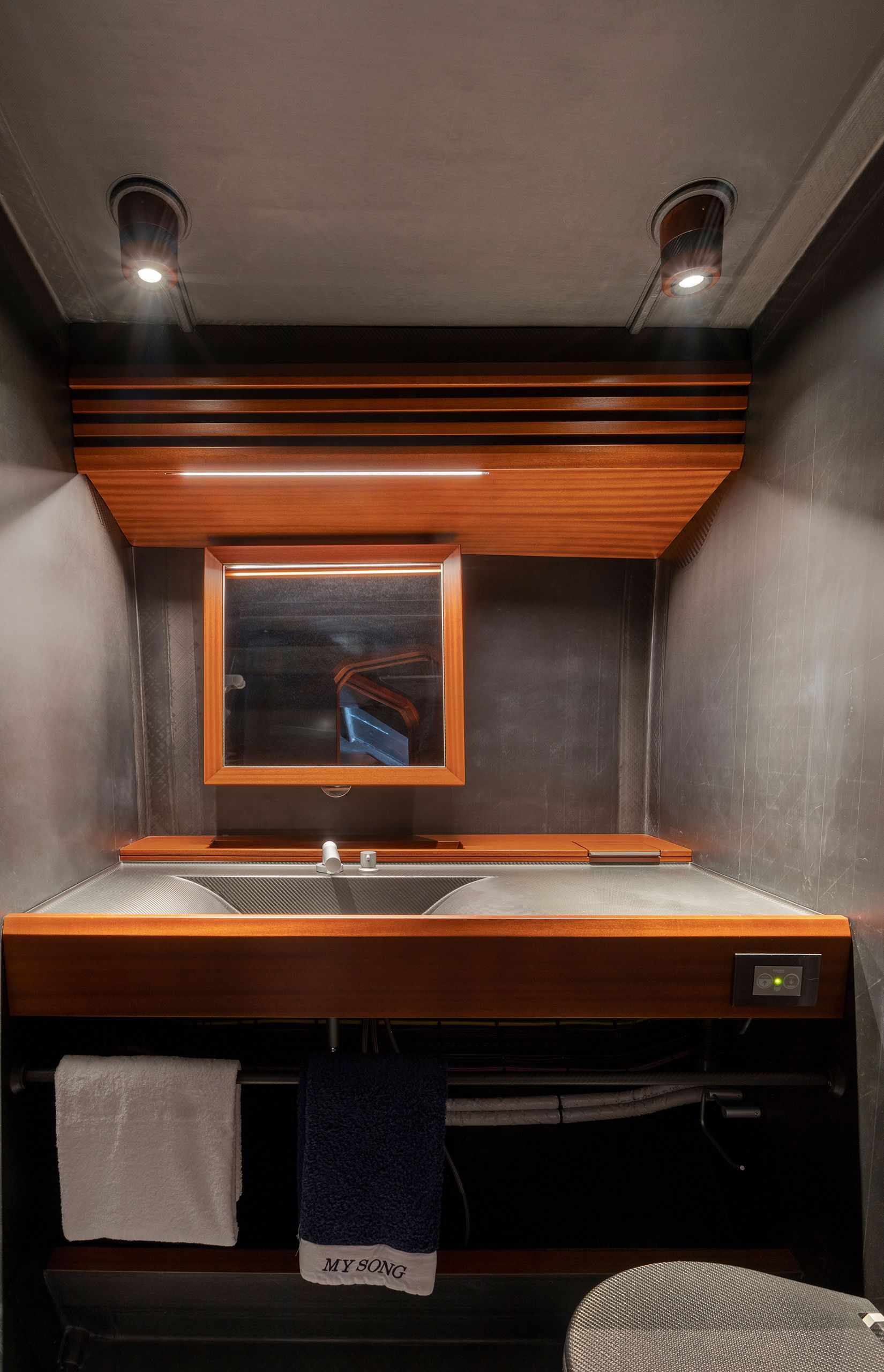
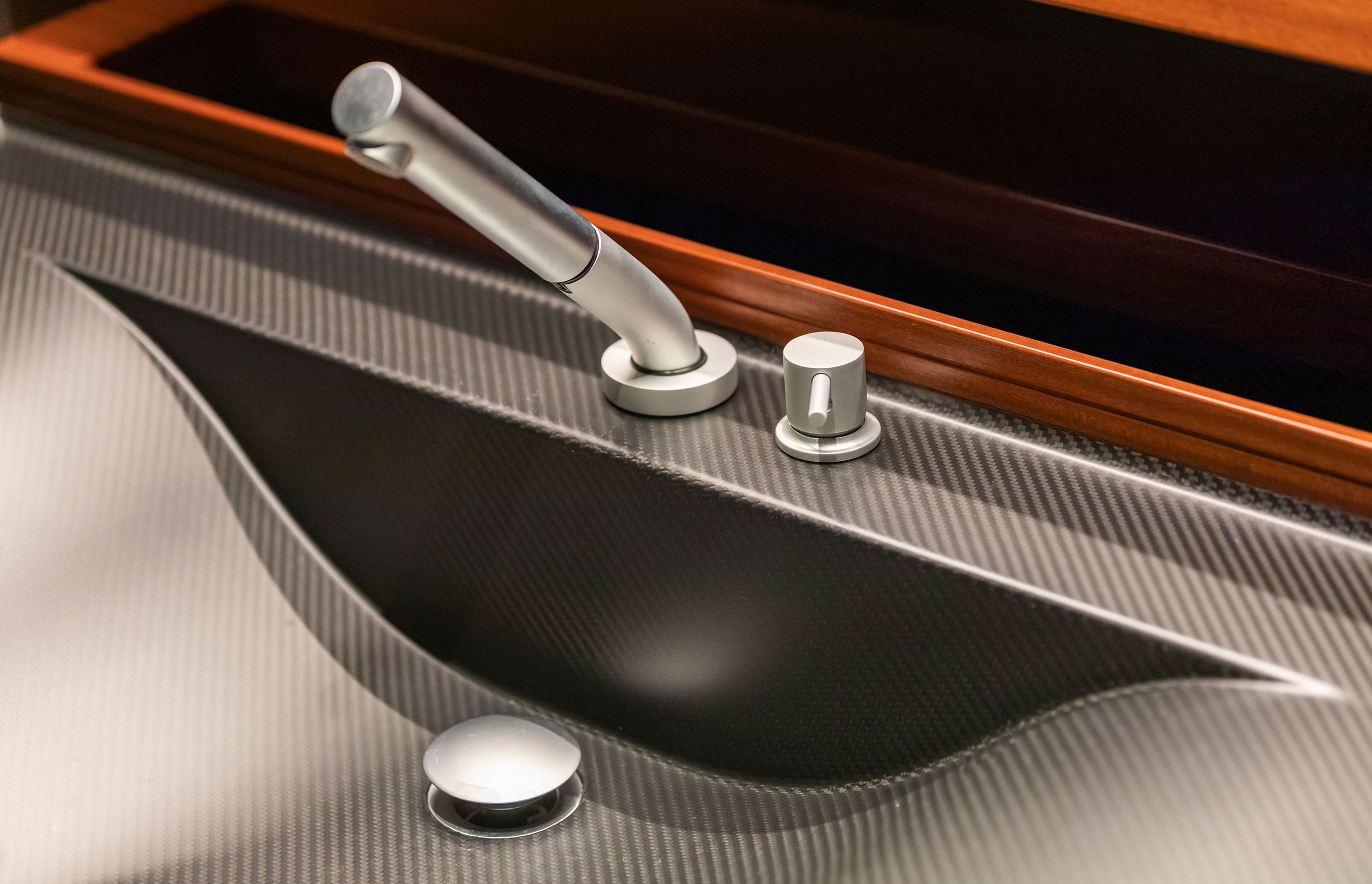
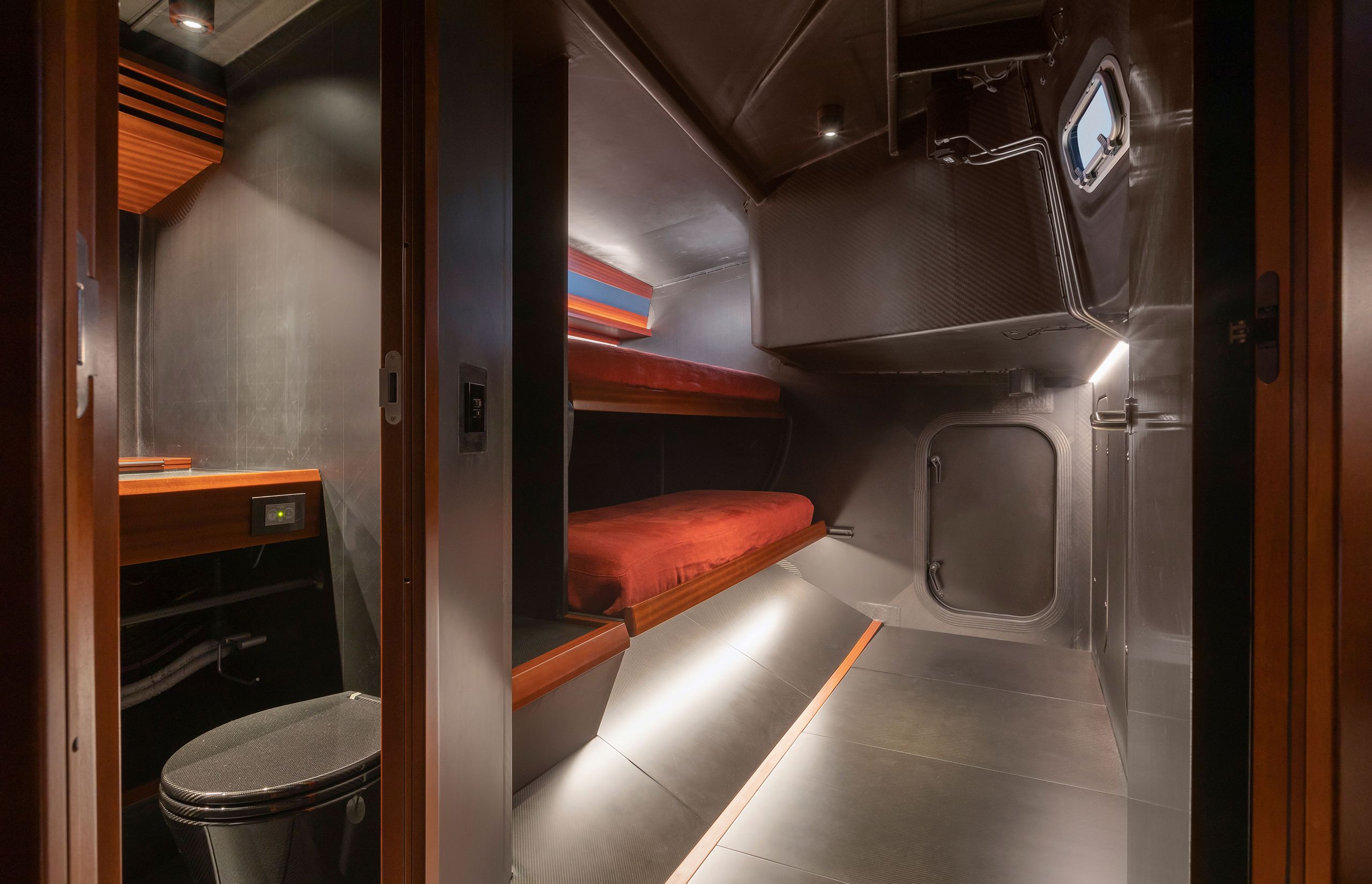


NAUTOR SWAN/STUDIO BORLENGHI
NAUTOR SWAN/STUDIO BORLENGHI

NAUTOR SWAN/STUDIO BORLENGHI
NAUTOR SWAN/STUDIO BORLENGHI

NAUTOR SWAN/STUDIO BORLENGHI
NAUTOR SWAN/STUDIO BORLENGHI

NAUTOR SWAN/STUDIO BORLENGHI
NAUTOR SWAN/STUDIO BORLENGHI
Top right: A view of the minimalistic owner’s cabin forward, a tribute to the yacht’s featherlight characteristics. Some closer details of the heads compartment (bottom left and middle), the galley and saloon (top left) and the crew cabin starboard aft (bottom right)
A four-metre retractable bowsprit allows a staysail to be flown as well as a spinnaker in some conditions. The headsails are on furlers and there is an internal spinnaker retrieval system. This means that it is possible to race My Song with just 16 to 18 crew. Loro Piana’s previous yacht needed a race crew of 30 to 40.
The tall rig and sail inventory is the result of a collaboration with Southern Spars, Future Fibres and North Sails, all part of the North Technology Group. North Sails’ president, Ken Read, a top round-the-world skipper and one of the world’s most skilled sailors of canting keel yachts, led My Song’s crew in their initial races and race training.
“My role is twofold,” he explains, “overseeing the collaboration, supplying all the aerodynamic coefficients and then putting together the package so it works right out of the box. The VPP [Velocity Prediction Program] says the boat is supposed to go this fast and [at] this angle, and the sails have to do that. There is no more designing a boat and [then] making the sails – if you’re doing that, you are already off the pace.”
Extensive design studies were carried out on how to reduce the weight of the rig and sails. North Sails’ Helix structured luffs were used in headsails and Benussi says that this has allowed forestay loads to be reduced by up to 30 per cent.
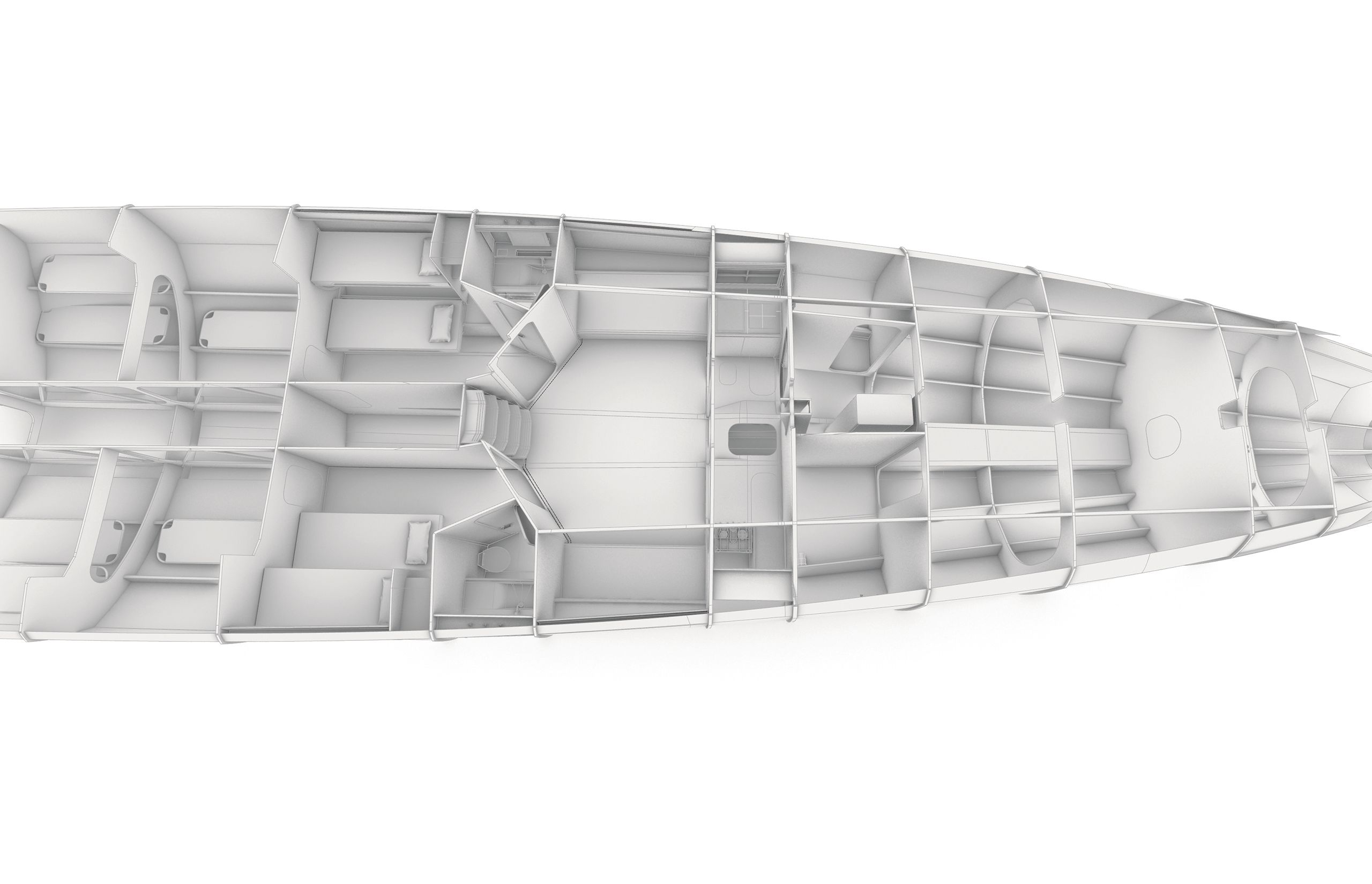
RACING MODE
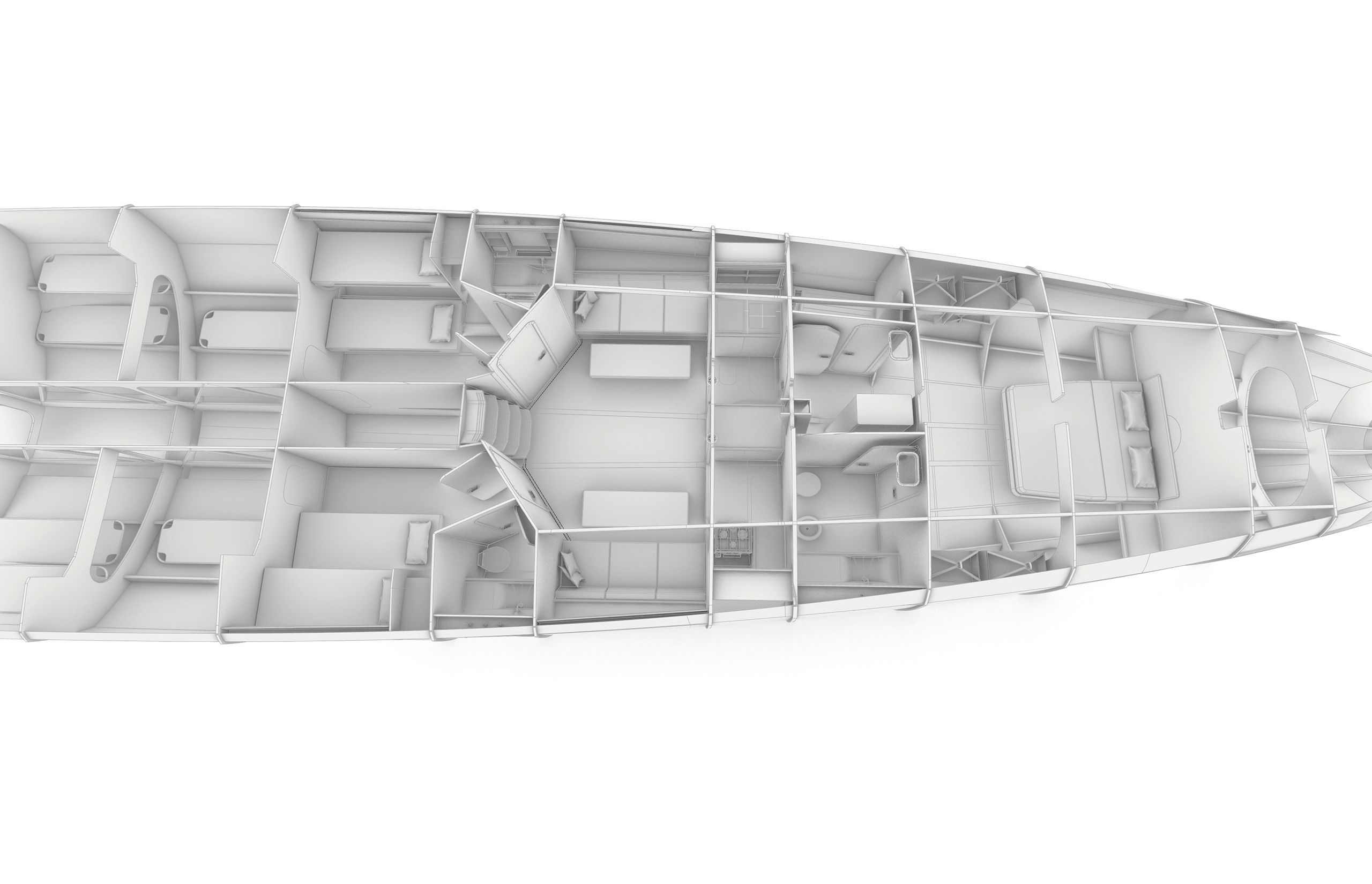
CRUISING MODE
Technology is at the heart of My Song’s performance. The distinctive, broad orange draft stripes on the mainsail help with analysis of sail shape. Cameras can be attached to each side of the boom to record video to review after training sessions by a team that includes an analyst and sailmaker. Such detailed off-the-water analytics have trickled down from the America’s Cup thanks to the partnership forged with Persico Marine. In fact, the model was constructed using the same methods as the AC75 with the help of a Coriolis robot – used in the aerospace industry – to laminate the carbon.
But the ClubSwan 80 can be a pedigree thoroughbred racer one week and a downtempo cruiser the next. “The cool part for me is that you can have a weekend cruising in Bonifacio with three crew, or do a long race such as the Rolex Giraglia or the Rolex Middle Sea Race without sleeping on a sail bag,” says Benussi.
Nauta Design was tasked with creating a striking interior befitting a high-tech racer which could be transformed quickly into a comfortable family cruiser. On deck, the cockpit can be converted to an entertaining and lounging area with sunpads and a high-low table. The change from racing mode to cruising trim takes two crew only a couple of days.
The ClubSwan 80 will be an intoxicating ride, and a handful to race. This is an apparent wind machine, which behaves more like a multihull than the average monohull that cannot really be sailed by feel. “The feeling you have helming this boat is more exciting than my last yacht,” says Loro Piana. “The smaller you go with your boat, I think the more you are enjoying it. It is like driving a Gran Turismo, a supercar.”
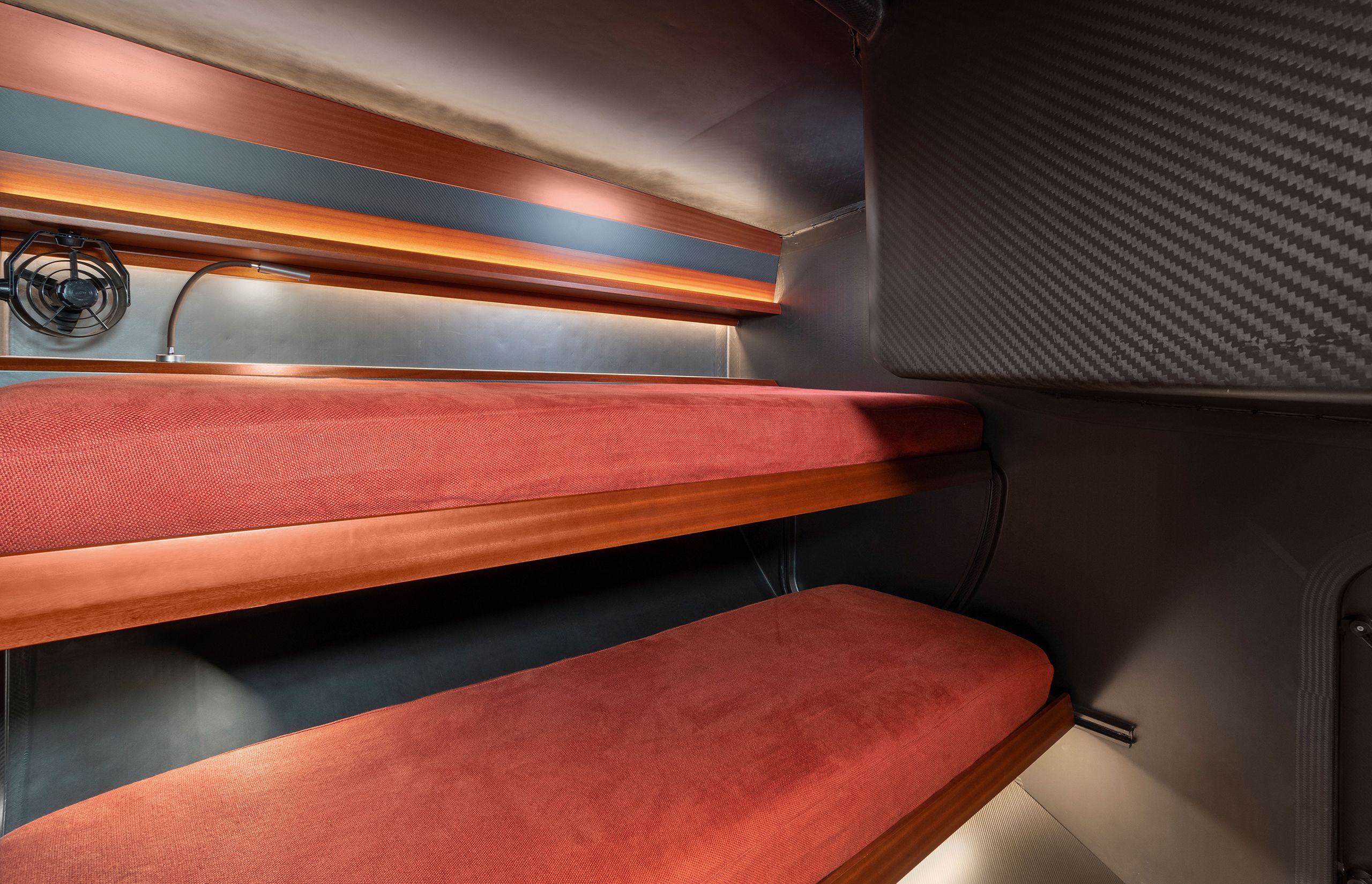
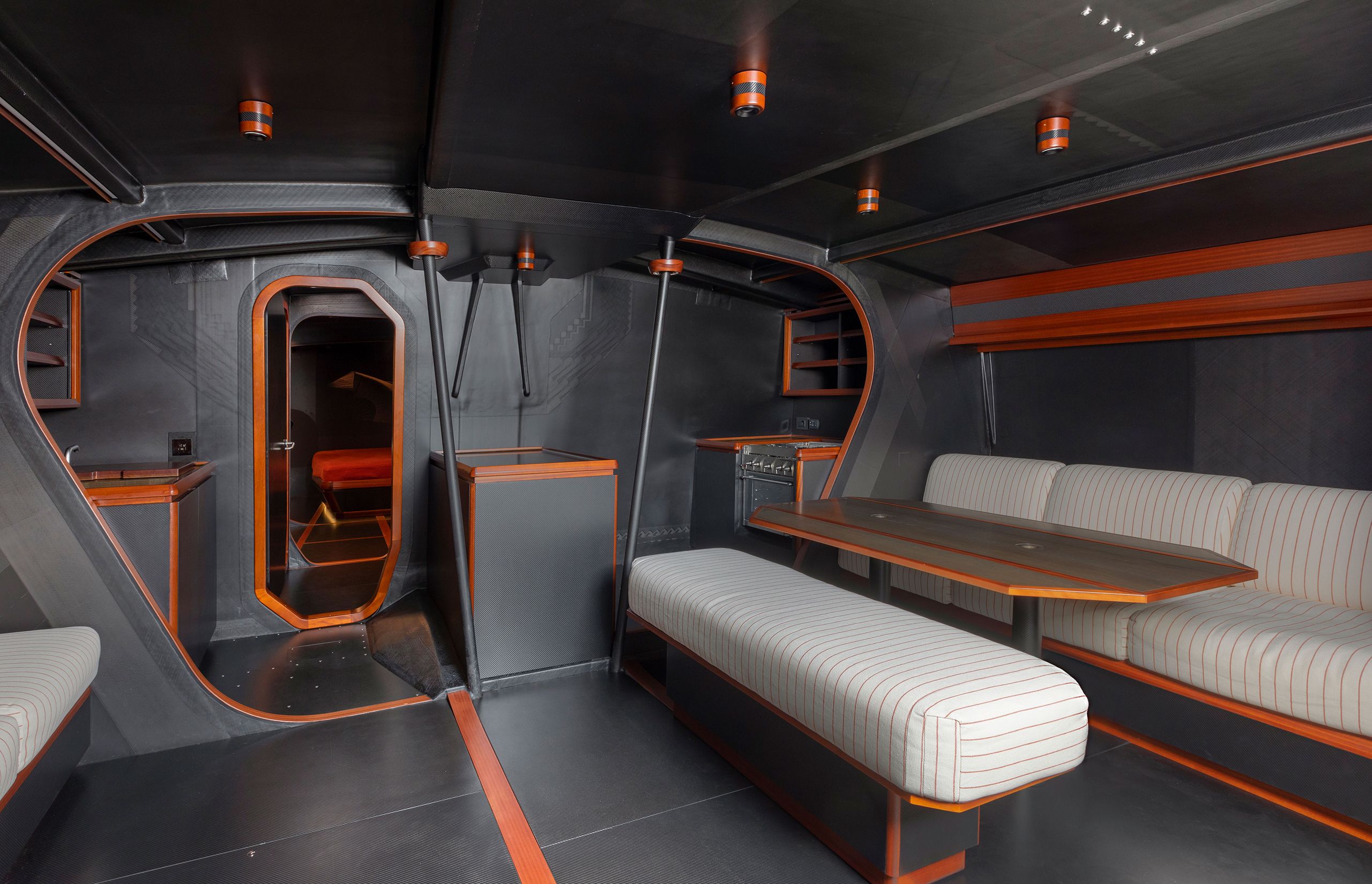


NAUTOR SWAN/STUDIO BORLENGHI
NAUTOR SWAN/STUDIO BORLENGHI

NAUTOR SWAN/STUDIO BORLENGHI
NAUTOR SWAN/STUDIO BORLENGHI

The interior design by Nauta purposely celebrates the carbon structure of the boat that is highlighted by elements of rich mahogany on the furniture and around the ceiling lights. In the owner’s cabin, LED rope lights emphasise this large space. The clever, lightweight wardrobe storage is made from the sails of the owner’s previous yacht
Will it take off as a one-design? Nautor believes it’s a chance worth taking. Top race results will be crucial. So far, they are promising. In September, My Song came away from the Maxi Yacht Rolex Cup with a fifth overall in a class of 13, including a first and a third place in five races. That was despite managing only a handful of training days since the launch.
The ClubSwan 80 is at the top end of the GT racer spectrum, but Loro Piana sees it as a long-term competitor: “I launched my 83ft Cookson Reichel-Pugh My Song in 1999 and sailed it for 17 years, and it is still very competitive. I hope this will be the same and have a very long life. It is a forever yacht.”
“I was going for classic elegance – beautiful spaces that could stand the test of time, and I think we achieved that”
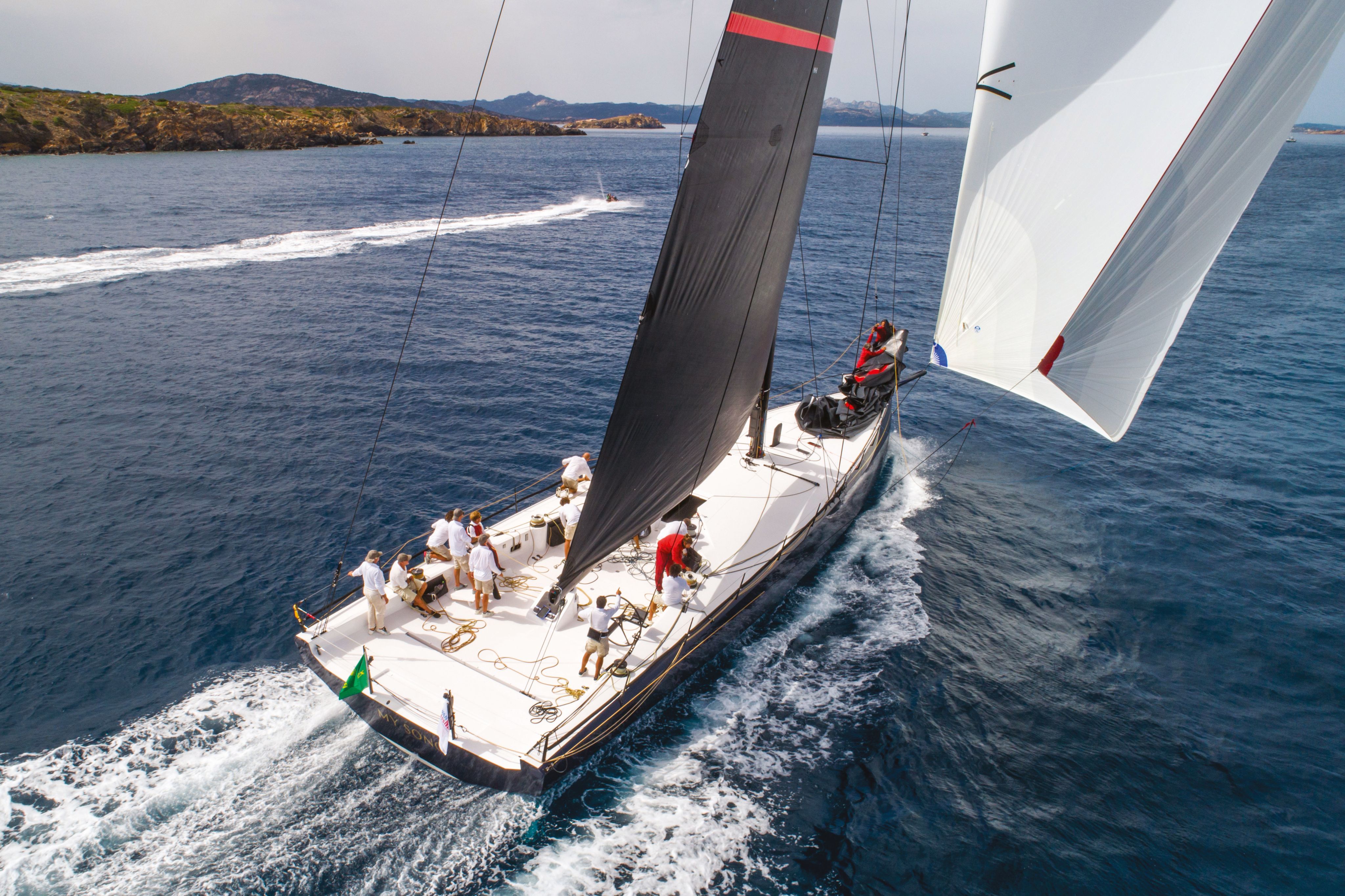
A one-design class of this size and of this magnitude has never been realised by anyone,” Nautor Swan’s senior adviser Enrico Chieffi says, “but we believed it was time. The technology is not new but the combination of the long bowsprit, the huge sails and canting keel makes it a bit of a monster. It is a game changer.”
THE CLUBSWAN BACKSTORY
Nautor took the yachting industry by surprise in 2016 when it brought in naval architect Juan Kouyoumdjian to design the ClubSwan 50 for its 50th anniversary. The designer is one of the most original minds in yachting, responsible for distinctive and sensationally powerful canting keel yachts, such as Rambler 88, three times Volvo Open 70 winners and IMOCA 60 round-the-world racers.
“The ClubSwan range represents the unconventional, the ‘think outside the box’,” says Giovanni Pomati, Nautor Group’s CEO. “It is where we can pioneer the use of new technologies and innovative solutions, including in materials, that then can be spread throughout the range.”
Nautor has a long history of performance racers that dates back to the Swan 45 (2002 to 2010), Swan 601 (2004 to 2007) and ClubSwan 42 (2006 to 2013), but the ClubSwan 50 was to be first of a new series of radical one-designs. It was followed in 2019 by the smaller ClubSwan 36, another Juan K design with an innovative sliding C-section foil to provide lift, boost power and promote skimming.
Then, in 2020, the company launched the largest ClubSwan to date, the giant 43-metre Skorpios, a super-high-tech canting keel, C-Foil equipped yacht that went on to win line honours in the Rolex Fastnet Race.
The ClubSwan 80 is the latest of this series, filling the gap in the popular and ultra-competitive Maxi class, where Nautor believes there is potential for what could be the largest one-design racing yacht in the world.
Keeping up the pace of new designs, Nautor completed the range with the new ClubSwan 41 revealed at the September 2022 Cannes Yachting Festival. This is more conventional, a so-called “sport cruiser” with a fixed-fin keel.
First published in the January 2023 issue of BOAT International. Get this magazine sent straight to your door, or subscribe and never miss an issue.
The mast is in high-modulus carbon and the carbon standing rigging is aerofoil to reduce drag, and has built-in sensors.
The deck plan shows the exceedingly clean cockpit and flush deck of the yacht in race mode
There are discreet fittings in the cockpit floor so that furniture can be added for cruising.
The lower deck is shown in its cruising configuration.
The furniture can be removed for racing.

